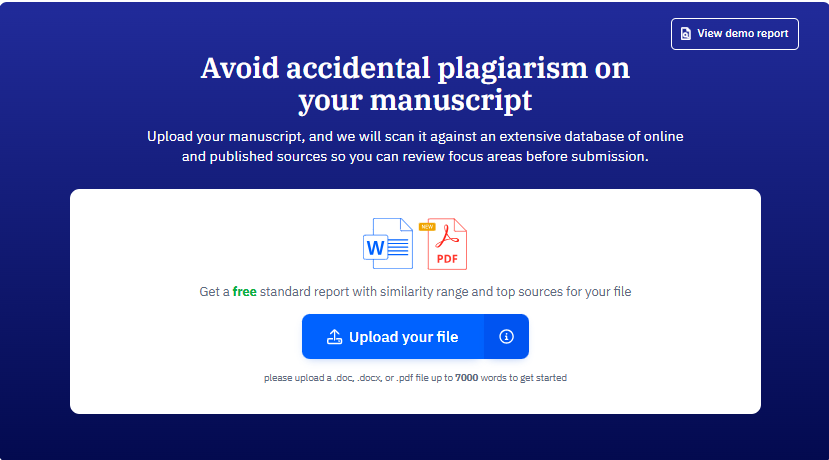Table of Contents
Inadvertent plagiarism is a pressing issue in academia, often stemming from a lack of awareness or misunderstanding regarding proper citation practices. It can take many forms, such as failing to attribute ideas, paraphrasing too closely, or patchwork plagiarism, which involves blending content from multiple sources without proper acknowledgement. The scale of the problem can be understood if we look at data released by the National Science Foundation.
Between 2007 and 2020, the National Science Foundation made 200 research misconduct findings, 78% of which were related to plagiarism.¹ While often unintentional, patchwork plagiarism undermines academic integrity and highlights the need for students and researchers to remain vigilant about crediting sources and ensuring originality in their work.
What is Patchwork Plagiarism?
Patchwork plagiarism can be defined as the act of combining or rearranging content and ideas drawn from multiple sources without proper citation, thereby creating work that, though it appears original, is not; it is merely a patchwork or mosaic of ideas and text.
For example, when a student or researcher is unable to find relevant data or if the topic they are working on does not have supporting information or sufficient research and analysis, then patchwork plagiarism can creep into their papers. There are three types of patchwork plagiarism, which are explained below:
- Direct Patchwork involves copying entire sections of text from various sources and blending them to create an article or essay.
- Conceptual Patchwork means that the writer borrows ideas and text, combines them with related concepts from various sources, and puts them together as a single output without acknowledging or citing the original source.
- Structural Patchwork involves rearranging information from just one source – but without citations.
How to Identify Patchwork Plagiarism?
Identifying patchwork plagiarism can be challenging, as it involves altering the structure of information and ideas in such a way that even many online plagiarism detectors may not recognize it. However, there are certain red flags that can indicate the presence of patchwork plagiarism, including:
- Differences in writing styles
- Repetitive concepts
- Variations in terminology
- Mixed use of British and American English
- Similar sentence structures
- Lack of cohesive sentences
As you read various papers that appear in scholarly journals and periodicals that are peer-reviewed rigorously, you can quickly begin to identify instances of text recycling and patchwork plagiarism. Typically, the writer will use a combination of sources without any attempt to make an original point. This lack of originality can be seen in writings that use multiple ideas but refrain from providing any attribution.
In certain cases, it may be challenging to detect a precise instance of patchwork plagiarism, as you may have reservations or doubts about what you have just read. In these situations, look for writing styles that may not match as the article progresses. Focus on how the structuring of sentences may have changed or if there are abrupt changes in the tone that the writer is using. Also, keep your eyes open for ideas or opinions that occur repetitively.
Given that all forms of plagiarism affect academic integrity, students and researchers must be aware of its ethical implications. The consequences of being accused of patchwork plagiarism can be grave. They may include penalties by academic institutions, loss of credibility among peers, supervisors, and academic groups and a severe impact on reputation and career.
Other serious consequences could include restrictions on publishing work, and in severe cases, it can also invite legal sanctions, with copyright holders proceeding to sue the plagiarist, citing the act as a criminal offence. This, while completely ruining one’s academic reputation, will also raise doubts and questions about the individual’s capability and critical thinking skills.
How to Prevent Patchwork Plagiarism?
Students and researchers must work proactively along with teachers and supervisors to take preventive steps to avoid patchwork plagiarism. At the outset, spend a lot of time reading and researching the topic you intend to write about. This will help you gain an understanding of the subject so that you can then build on this knowledge. The best way to avoid plagiarism is to present original ideas from your point of view. If you find information that you would like to use, make notes and ensure that every idea or text sourced is placed within quotation marks and cited accurately.
Moreover, no matter how meticulous you are with your notes and writing, it’s still possible to overlook passages that may be deemed plagiarized. With countless people addressing similar topics, unintentional plagiarism can occur—even when you’ve carefully cited your sources. That’s why using advanced online plagiarism checkers like Paperpal can be invaluable.
Paperpal scans your text against an extensive database of 99 billion webpages, including 200 million Open Access research articles, to detect similar phrasing and synonym swapping in minutes. If it finds instances where a piece of writing has a high match with a source, this will be highlighted for you to review and take the necessary measures. With a Paperpal free plan, users can scan up to 7000 words per month. With Prime, you can check up to 10,000 words per month or purchase extra 10,000, 25,000 or 50,000 additional words.
Do keep in mind that plagiarism can invite severe consequences ranging from compromising academic integrity and producing weak and poor research outputs to seriously impacting one’s academic career and future. Using practical online plagiarism detection tools like Paperpal will ensure that your writing is free of even inadvertent instances of patchwork plagiarism.
References:
- https://research.uh.edu/the-big-idea/university-research-explained/unintentional-plagiarism-is-it-avoidable/
Paperpal is a comprehensive AI writing toolkit that helps students and researchers achieve 2x the writing in half the time. It leverages 22+ years of STM experience and insights from millions of research articles to provide in-depth academic writing, language editing, and submission readiness support to help you write better, faster.
Get accurate academic translations, rewriting support, grammar checks, vocabulary suggestions, and generative AI assistance that delivers human precision at machine speed. Try for free or upgrade to Paperpal Prime starting at US$25 a month to access premium features, including consistency, plagiarism, and 30+ submission readiness checks to help you succeed.
Experience the future of academic writing – Sign up to Paperpal and start writing for free!




